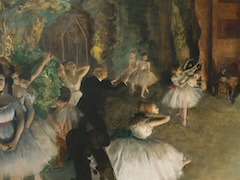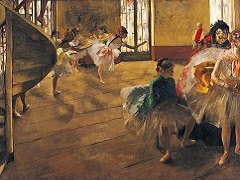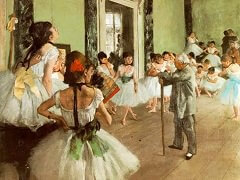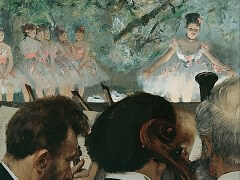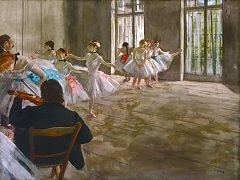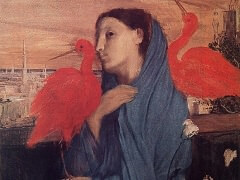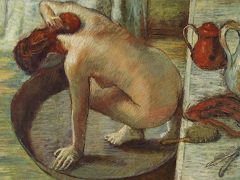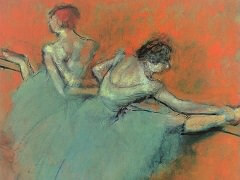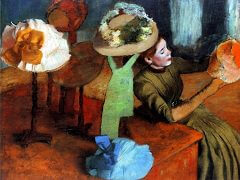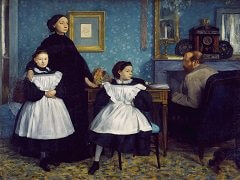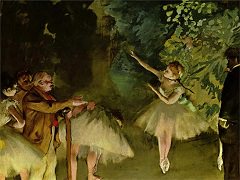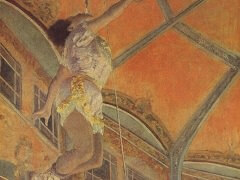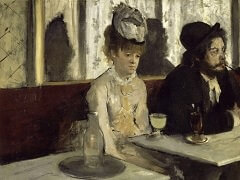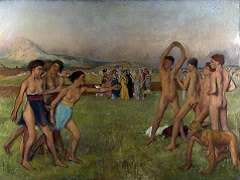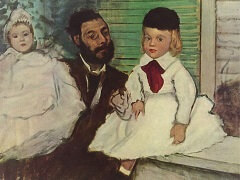Two Laundresses, 1876 by Edgar Degas
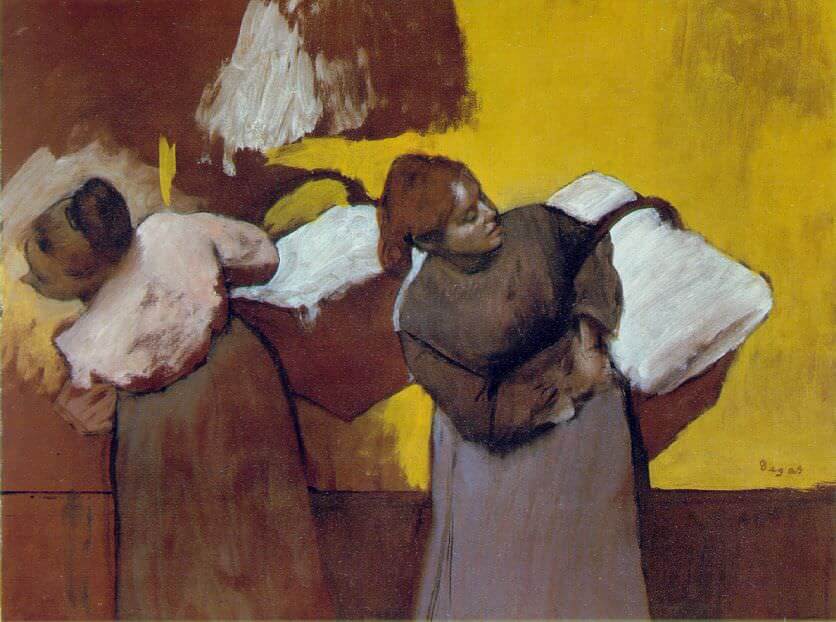
Edgar Degas had not been the first nineteenth-century artist to paint laundresses. Daumier had done a series of them in which he curiously ennobled the typical washerwoman of the Paris streets bearing her heavy basket and tugging a child after her. Degas' version is more gracious and more decorative, and typically has set one figure against the other, enjoying the contrast of poses, the repetition of shapes in the turned heads and the baskets of fresh linen. His outlines are at the same time secure and fluid; and, as often, he has studied the thrust of the figure in action, balancing its load. He has further composed the figures to suggest a moment: one laundress moves to the left, the other to the right as though they were passing and about to move away from one another. The bright color (particularly in the yellow background on the right) thrusts the figures forward, stressing their silhouettes. In a lesser artist the picture would have turned into a mere poster, but, so strong is Degas' feeling for the simplified forms and so sensitively does he contrast the modeled heads with the summary treatment of the rest, that the work is remarkably solid in effect. The influence of Oriental art is clearly apparent in the large flat areas and in the contours which remind one of Japanese prints.

